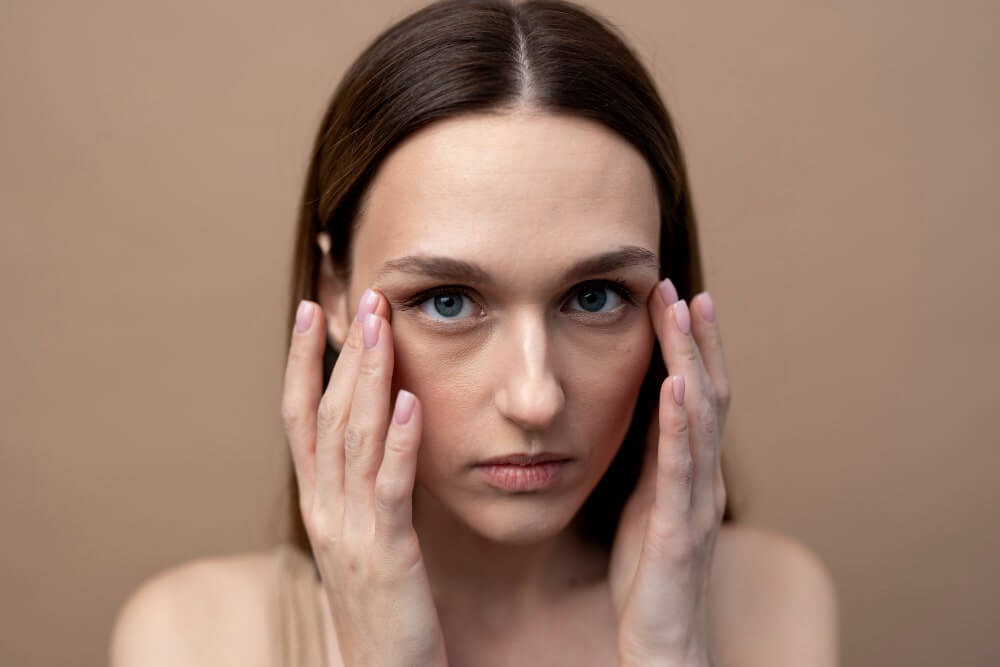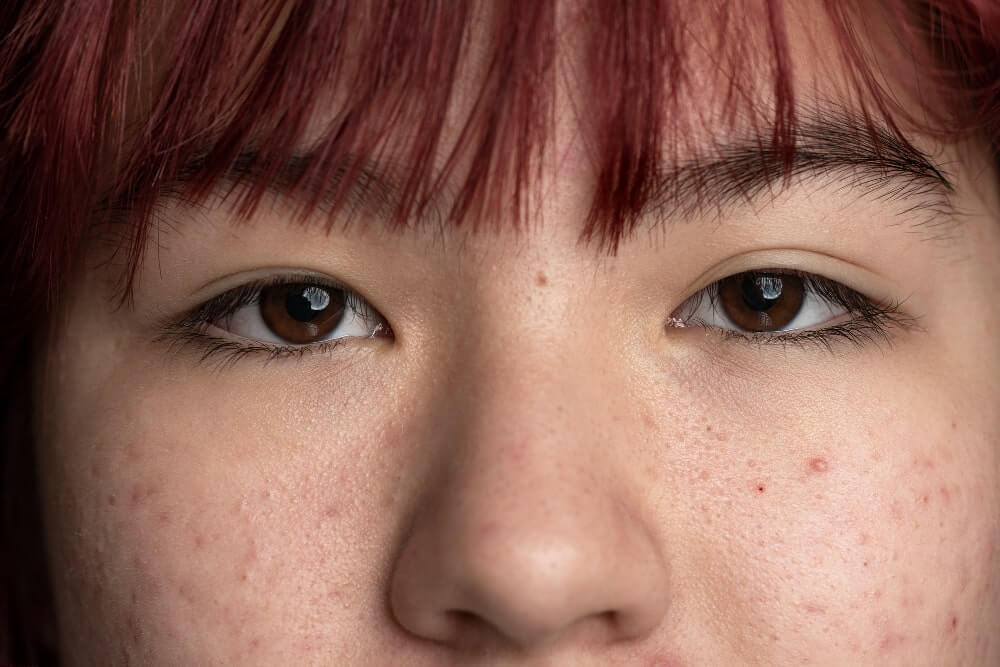Causes of Hyperpigmentation Under the Eyes
Do you struggle with dark circles under your eyes? Don’t worry; you’re not alone. For many people, the area under their eyes is one of the first spots to show aging signs. The skin there is thinner and more delicate compared to other parts of the face, making it more prone to showing effects of sun damage, dryness, and environmental factors. Depending on your skin tone, the colour can vary from blue, purple, brown, or black. While dark under-eye circles can have various causes, they are usually unrelated to any medical issue. Generally, they are not a reason for worry, but some people may want to reduce their visibility for cosmetic reasons.
Understanding the Causes of Hyperpigmentation Under the Eyes is essential to address this common skin concern. In this guide, we’ll explore the Causes of Hyperpigmentation Under the Eyes and how to deal with them. Say goodbye to those dark spots and hello to a brighter, more youthful look.
What exactly is Hyperpigmentation?
Hyperpigmentation is when some parts of your skin appear darker than your regular skin colour because there is too much production of the brown pigment called melanin. This condition is noticeable in liver spots (age spots) and sunspots, where the darkened patches are more visible.
What Causes Dark Circles Under the Eyes?
Certain people are more likely to have dark circles under their eyes, known as under-eye hyperpigmentation. Various factors can cause dark circles under your eyes, and it’s important to know what they are to address this skin concern.
Age and Natural Aging Process
As we age, our skin thins, blood vessels become more visible, and dark circles under the eyes can appear. Reduced collagen and elastin production contributes to wrinkles, while UV exposure and environmental factors can worsen the condition. Protecting and caring for your skin can help minimize dark circles due to aging.
Sun Exposure and UV Damage
Sun exposure and UV rays trigger dark spots under the eyes. The delicate skin in this area is sensitive to the sun, resulting in increased melanin production and hyperpigmentation. UV rays also harm collagen, causing premature aging and wrinkles. Shield your under-eye area with sunscreen and sunglasses to preserve its youthful appearance and prevent dark spots.
Hormonal Changes
Hormonal changes can lead to under-eye hyperpigmentation. Fluctuating hormone levels during pregnancy, menopause, or due to certain medications can increase melanin production, causing dark spots under the eyes. Managing hormone imbalances and discussing medication side effects with a healthcare professional is essential.
Genetics and Ethnicity
Genetics and ethnicity play a role in under-eye hyperpigmentation. Certain skin types and ethnic backgrounds may make dark circles more noticeable. While you can’t change your genes, taking preventive measures, like sunscreen and a healthy lifestyle, can help.
Lack of Sleep and Fatigue
Not getting enough sleep and feeling tired can make dark circles appear under your eyes. When you’re sleep-deprived, the blood vessels under your eyes may get bigger, making the skin look darker. Fatigue can also reduce blood flow, making the skin look paler and the dark circles more noticeable. Besides, lack of sleep can cause fluid to build up, leading to puffiness around the eyes.
Skin Conditions and Allergies
Skin conditions and allergies can worsen dark circles under the eyes. Eczema, contact dermatitis, and allergies to cosmetics or environmental factors can lead to inflammation and irritation, resulting in darkened skin.
How Do You Distinguish Dark Circles From Hyperpigmentation?
Distinguishing dark circles from hyperpigmentation is essential for understanding the root cause of under-eye discoloration. While they may appear similar, there are distinct differences between the two. Dark circles are often caused by factors like lack of sleep, fatigue, or genetics, and they typically appear as shadows under the eyes. On the other hand, hyperpigmentation is the result of excess melanin production and can be triggered by factors like sun exposure, hormonal changes, or skin conditions. Hyperpigmentation appears as dark patches or spots on the skin. To distinguish between the two, observe the colour and texture of the discoloration. Dark circles are usually more blueish or purplish, while hyperpigmentation tends to be brown or black. If you’re unsure, consulting with a dermatologist can help pinpoint the specific cause and recommend suitable treatments for a clearer and brighter under-eye area.
How do you Treat Hyperpigmentation Under the Eyes?
It’s essential to use a careful and thoughtful approach to treat dark spots under the eyes effectively. There are several effective methods that can help fade and prevent these pigmentation issues in this sensitive area.
- Topical Treatments: Using products with vitamin C, retinol, or kojic acid to inhibit melanin production and promote skin lightening.
- Chemical Peels and Laser Treatments: These procedures target deeper layers of the skin to address stubborn hyperpigmentation.
- Sunscreen Protection: Daily sunscreen with a high SPF to prevent further skin darkening due to sun exposure.
- Healthy Lifestyle: Maintaining good sleep, hydration, and a balanced diet can improve overall skin health.
Consistency and patience are essential when treating hyperpigmentation, as it may take time to see visible improvements. If you need more clarification about the best course of action, consulting with a dermatologist or skincare professional can provide personalized recommendations and ensure you’re on the right path to achieving a more even-toned and radiant under-eye area. We are at your service at “Venus Skin Clinic,” if you need professional help.
What Vitamin Deficiency Causes Dark Under the Eyes?
Dark circles can be linked to a lack of essential vitamins like E, D, K, A, and B12. Iron deficiency is another potential cause of these under-eye circles.
What Vitamin is Good for Under-eye Dark Circles?
Including vitamin K in your daily diet can be beneficial for reducing dark circles. Foods like turnip greens, cauliflower, pomegranate, and tomatoes are excellent sources of vitamin K that can help disappear dark circles.
Are Dark Under-eye Circles Permanent?
The appearance of dark circles under the eyes can be temporary and influenced by various factors. These factors include your lifestyle choices, genetic predisposition, and any nutritional deficiencies you may have. The duration of dark circles may vary based on these elements, and they can come and go over time. By understanding these underlying factors, you can take steps to manage and reduce the occurrence of dark circles effectively.
Conclusion
In conclusion, understanding what causes dark circles under the eyes is the first step in dealing with this common skin issue. Throughout this guide, we’ve learned about the different reasons behind these dark spots, like aging, sun damage, and environmental factors. Remember, you’re not alone in facing this, and it’s usually not a medical problem. Embrace your unique beauty, but if you want to reduce dark circles for cosmetic reasons, there are solutions available. Whether it’s trying home remedies, using skincare products, or seeking professional treatments, the choice is yours. Embrace the journey to a brighter, more youthful look and feel confident in your own skin. Say goodbye to those dark spots and hello to a fresh and revitalized appearance. You deserve to radiate confidence and joy whenever you look in the mirror.



